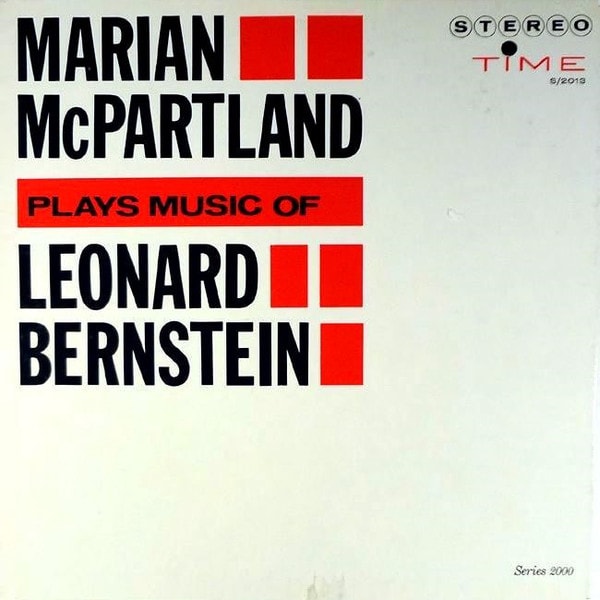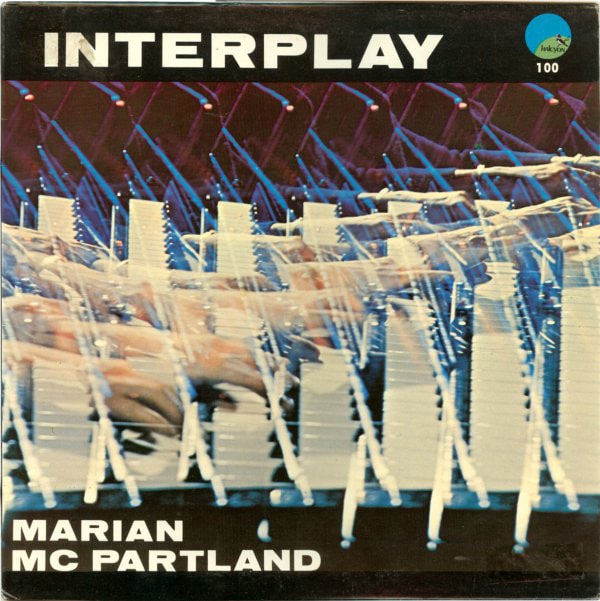Britain still had a few more months of World War I to endure when Margaret Marian Turner was born in Slough, England in 1918. By the time World War II came around, she was a skilled enough jazz pianist – she’d obsessed over Fats Waller and Count Basie in her teens – to join the USO. While touring for the troops, she met her husband, Chicago cornetist Jimmy McPartland, at an after-show jam session in Belgium.
Still, there was nothing remotely likely about her becoming a jazz star. But she did it. Even more than her fifty-plus recordings, her importance to other musicians can be measured by the nine honorary doctorates and many awards she received over the decades.
Her playing? Elegant, yet courageous. Her charm, intellect, and curiosity are as obvious in her music-making as they are in her personality. Jazz fans got to know her well, thanks to the National Public Radio show Marian McPartland’s Piano Jazz, which she hosted from 1978-2011. She died in 2013.
Please enjoy the beauty, bravery, and brains of these tracks by Marian McPartland.
- “Paper Moon”

The Magnificent Marian McPartland
Savoy
1952
McPartland signed with Savoy records in 1951 with her trio, which at the time included Max Wayne on bass and Mousie Alexander on drums. Their regular gigs around New York, particularly at the Hickory House in New York, attracted the attention of some big-league players, particularly Duke Ellington, who was determined to help her career.
It’s not hard to understand why the Duke was so impressed. This early version of “Paper Moon” is a study in nuanced dynamics, a rare skill likely owed to McPartland’s classical training. She uses subtle changes in pressure on the piano keys to shape phrases and subphrases. In these early years, her improvisation tends to be busy but effortless.
- “For All We Know”

After Dark
Capitol
1956
McPartland loved to build on the trio sound by adding instruments and attempting different styles. Here she brings in Lucien Schmit on cello and Betty Glamann on harp.
The “after dark” in the album’s title seems to evoke an upscale cocktail lounge, so the cello and harp are meant to give the arrangement a sense of classy atmosphere. The cello adds an interesting richness; I’d be happier without the harp, but it was the taste of a certain set.
“For All We Know” is a 1934 standard that would have been known from Nat King Cole’s recording. McPartland’s classical chops are even more obvious here. (Pardon the static on this rare capture.)
- “I Can Cook Too”

Marian McPartland Plays Music of Leonard Bernstein
Time
1960
Like many jazz instrumentalists, McPartland gravitated toward tunes that were originally sung. This up-tempo song from On the Town demonstrates that McPartland could handle a harder swing and didn’t always go for soft-edged arrangements. While the Comden and Green lyrics are frenetically funny, McPartland goes for more of a smirk than a guffaw in this instrumental version.
This is just the trio, now with Ben Tucker on bass and Jake Hanna on drums. The condensed, chordal texture McPartland uses to introduce the melody makes it all the more glorious when she opens up into improv at 0:31.
- “Sweet and Lovely”

Bossa Nova + Soul
Time
1963
The combination of jazz and samba called bossa nova really took off in the 1960s, and McPartland jumped on board the trend. She brought in Ralph Dorsey (probably best known for his later work with Lou Donaldson) to man the congas, to which she added her own bebop-tinged dissonances. As for the trio, Ben Tucker is still on bass, and Dave Bailey plays drums.
McPartland’s approach to the hip new sound was to apply smooth samba-inspired syncopations to preexisting North American standards, in this case a tune from 1931. McPartland’s solo starting at 1:08 sounds like a lazy wander along the beach until you realize how complicated it is.
- “Things Ain’t What They Used to Be”

Interplay
Halcyon
1969
With the help of a couple of friends, McPartland founded Halcyon Records. This was one of their first releases.
It’s an unusual combo: piano and bass, but no drums! The bassist is Linc Milliman, a sought-after gig and session musician who’d spent several years with the Maynard Ferguson Big Band. While the track list includes a few McPartland originals (rare up to this point) and the recent Glen Campbell hit “By the Time I Get to Phoenix,” it’s the Ellington classic “Things Ain’t What They Used to Be” that stands out.
And don’t you just long to find more Milliman recordings after hearing his sly, dexterous pizzicato in this number?
- “Four-in-Hand Blues”

Elegant Piano
Halcyon
1970
Here’s another example of an album dedicated to unusual instrumentation: one- and two- piano tracks without a rhythm section, featuring fellow master Teddy Wilson. He was only a few years older than McPartland, although his recording career had started much earlier.
They co-wrote this A-side cut for the record. With such spare instrumentation, there’s nowhere to hide. You can sense them listening and responding to each other.
“Four-in-Hand Blues” starts at 10:38.
- “I’ll Remember April”

Now’s the Time
Halcyon
1977
Not surprisingly, McPartland was a staunch advocate of getting more women involved in jazz. To that end, she put together this all-female quintet for her own label and recorded it at a live gig. Joining McPartland are Vi Redd on alto sax, Lynn Milano on bass, Dottie Dodgion on drums, and Mary Osborne on guitar.
Although they didn’t take that next step of performing music by women composers, the all-male-written tracklist is excellent, including this standard by Gene Vincent De Paul. The quintet takes “I’ll Remember April” at an energetic clip, driven on by Redd with a push from Dodgion’s hi-hat. And look out for that 32-bar Mary Osborne solo at 2:25! McPartland, the cordial host, stays in the background until 3:50, when she turns descending arpeggiated chords into an artform.
- “Willow Weep for Me”

Live at Maybeck Recital Hall, Volume Nine
Concord
1991
The Maybeck Recital Hall in Berkeley, CA, was the venue for a large series of live jazz records on Concord, of which this is the ninth. The whole album is solo McPartland, who leaves no doubt that her chops are at full power at age 73, and her musical intellect is enhanced by her decades of experience.
[I love the late Marian McPartland, both her persona and her playing. You may find this brief mention of the record company she co-founded with Sherman Fairchild and Hank O’Neal of interest—Ed.]


